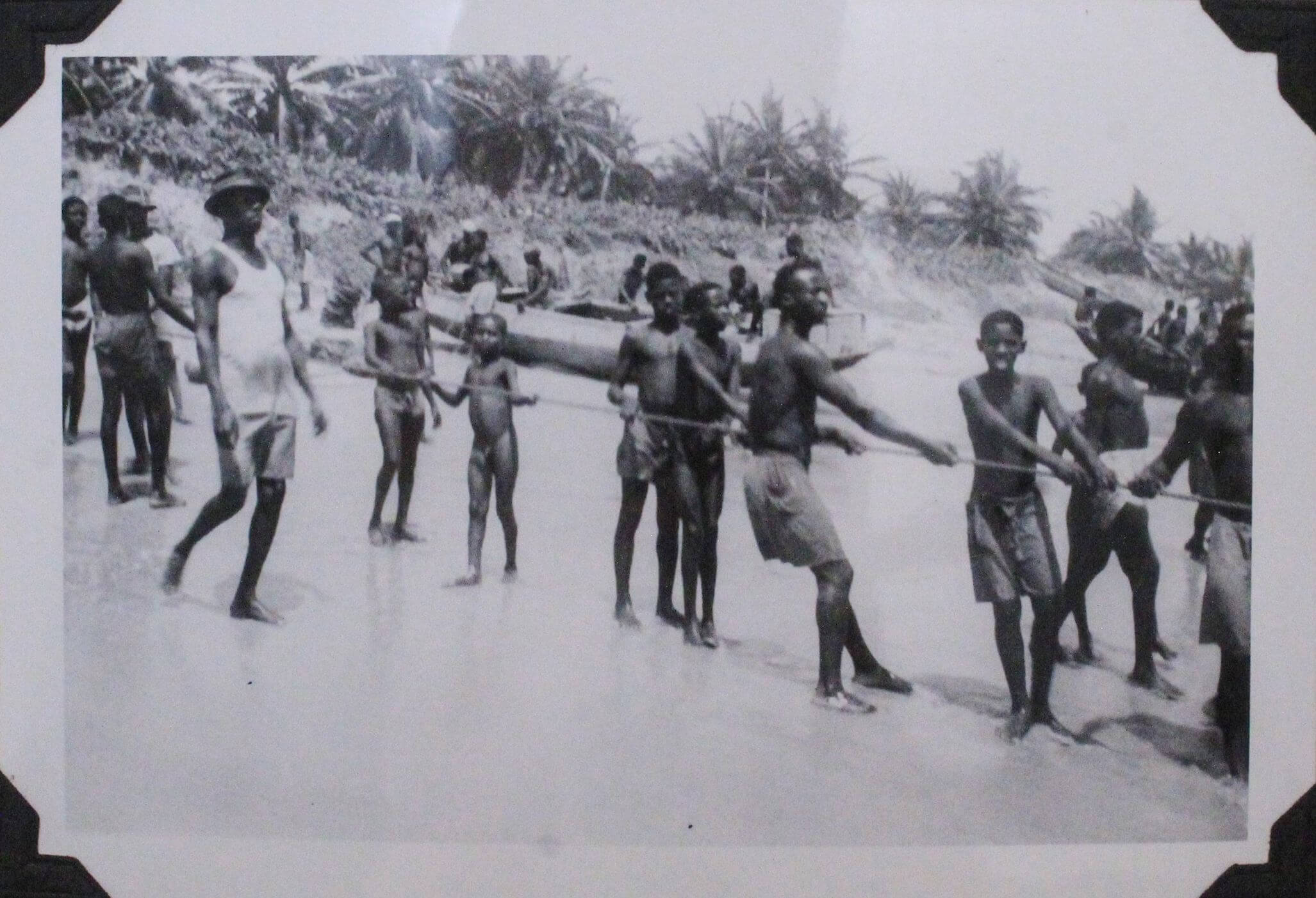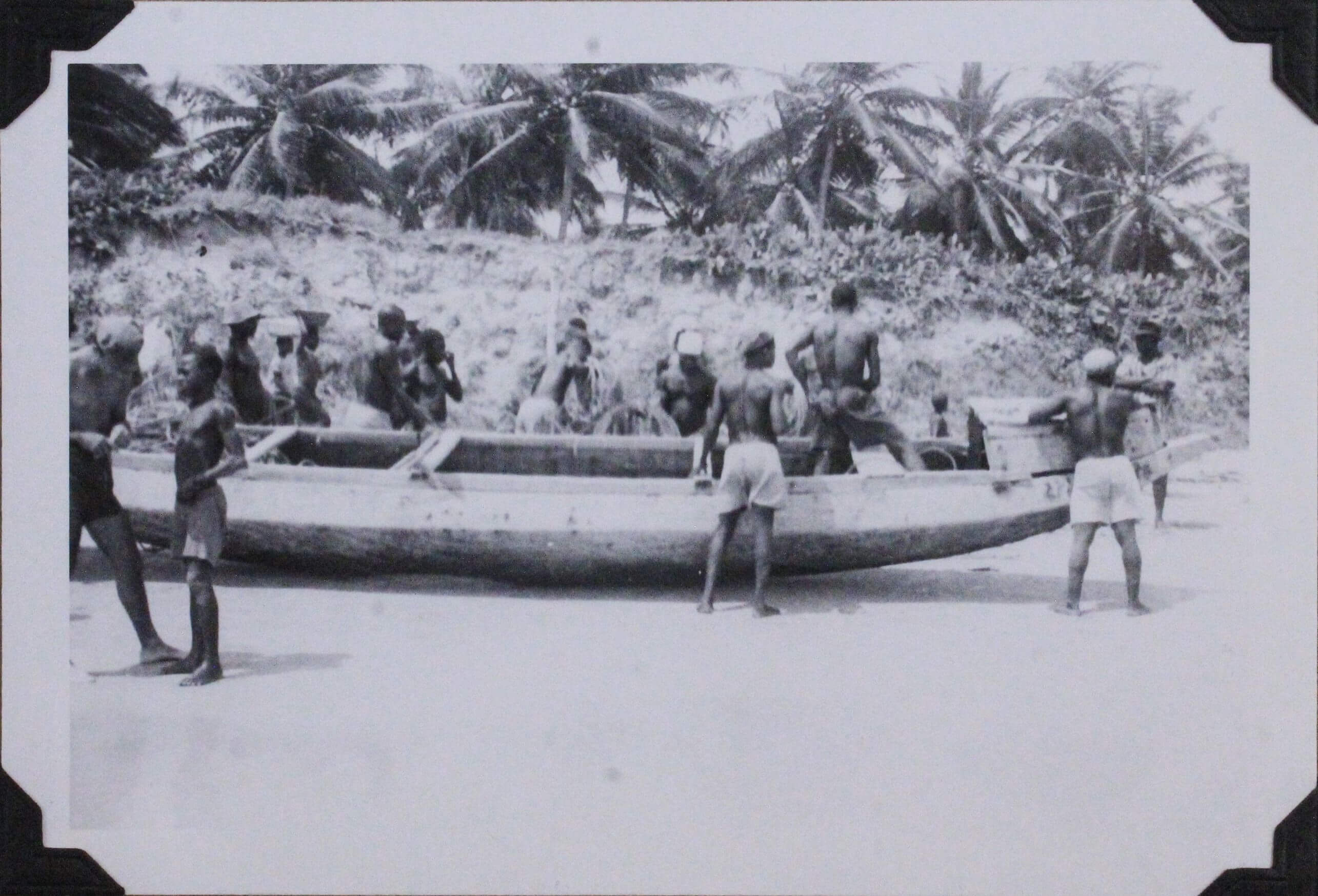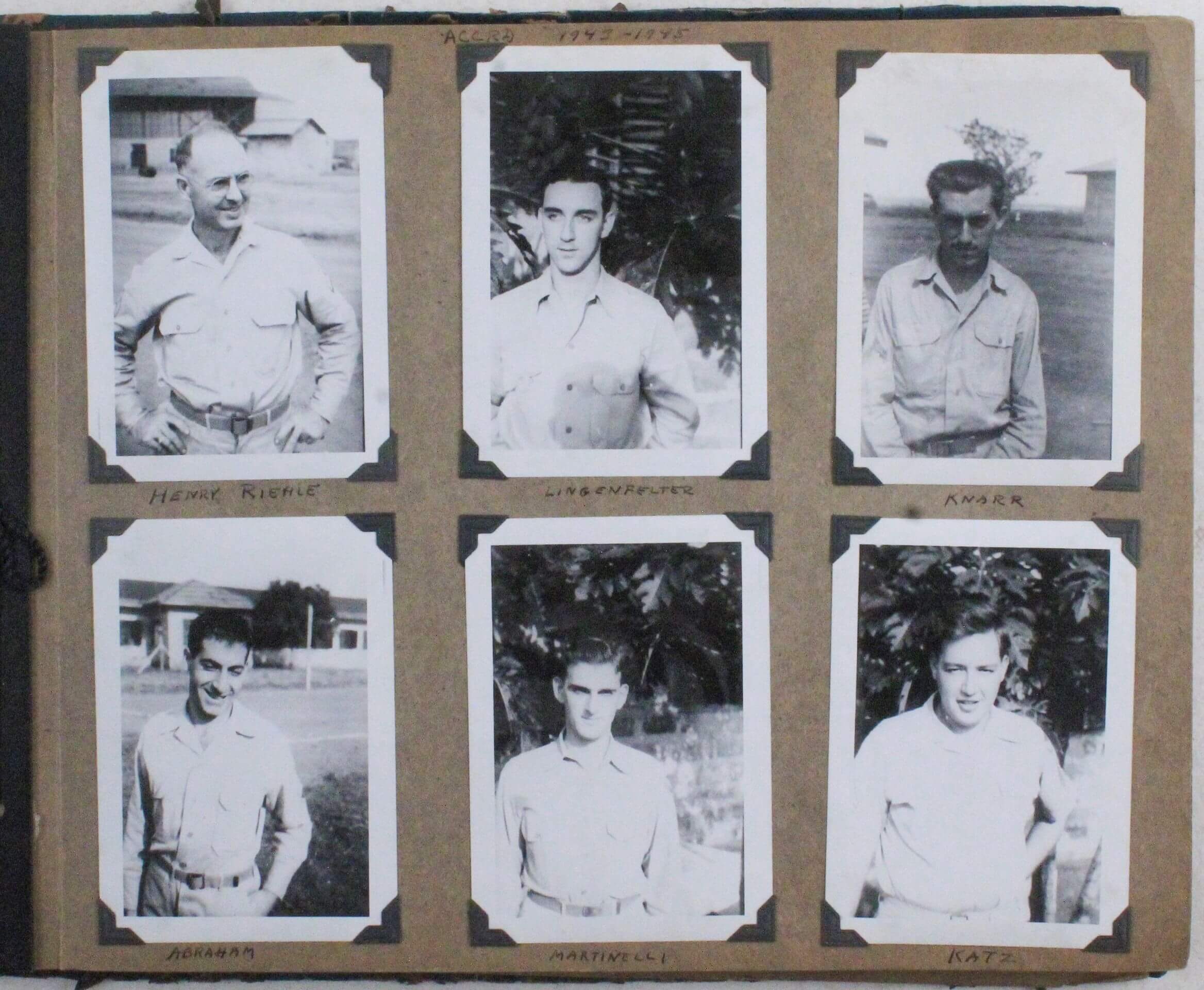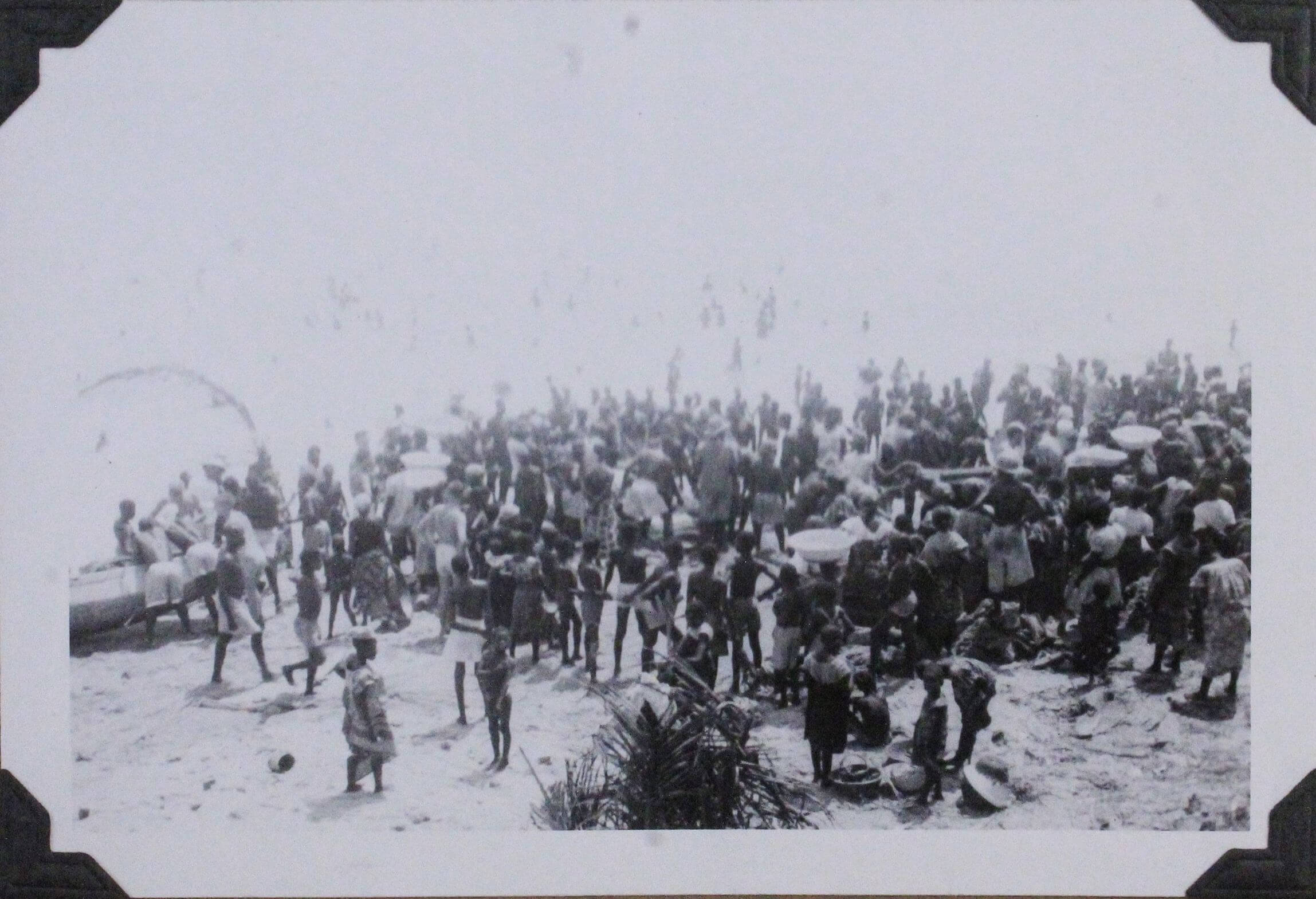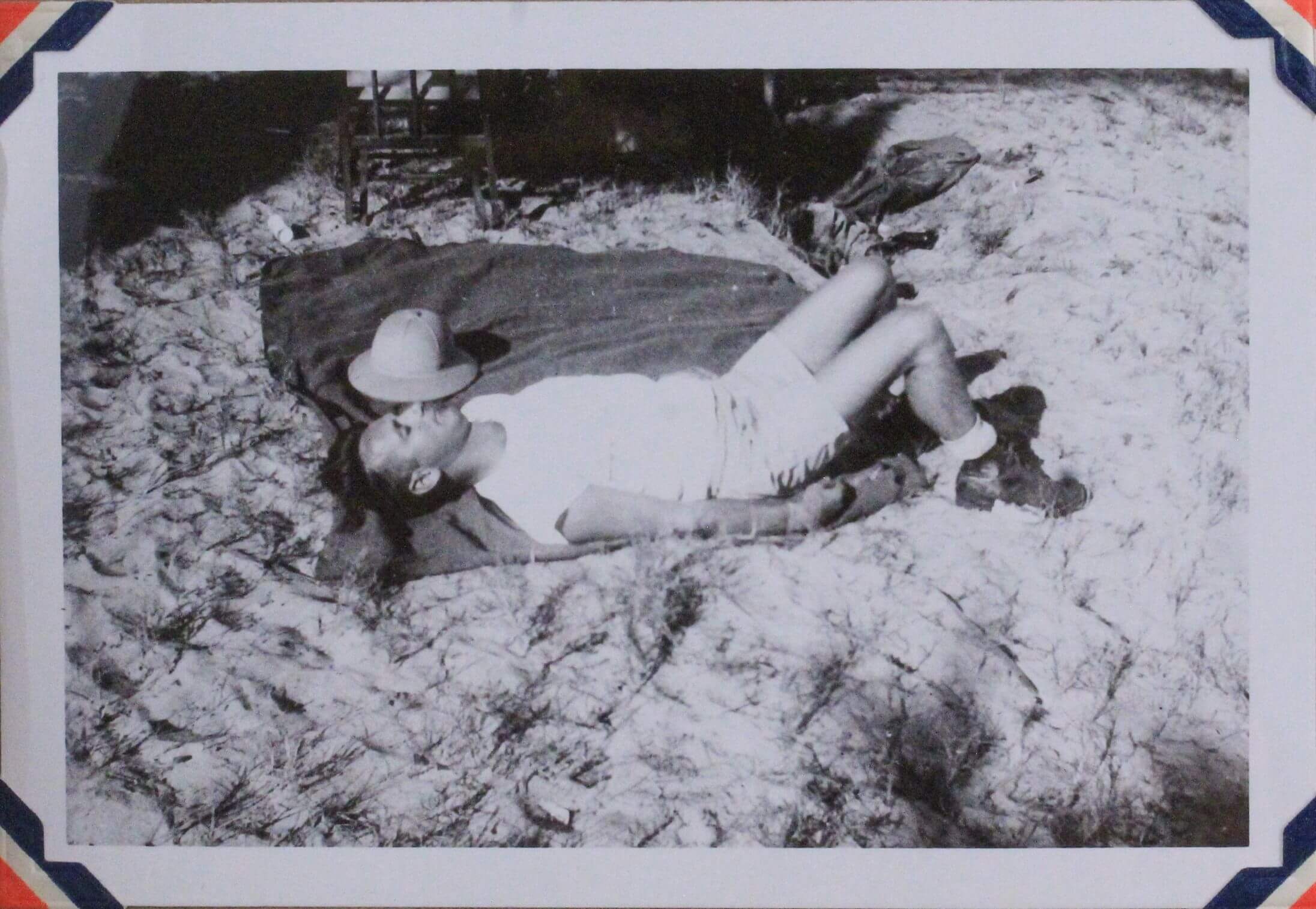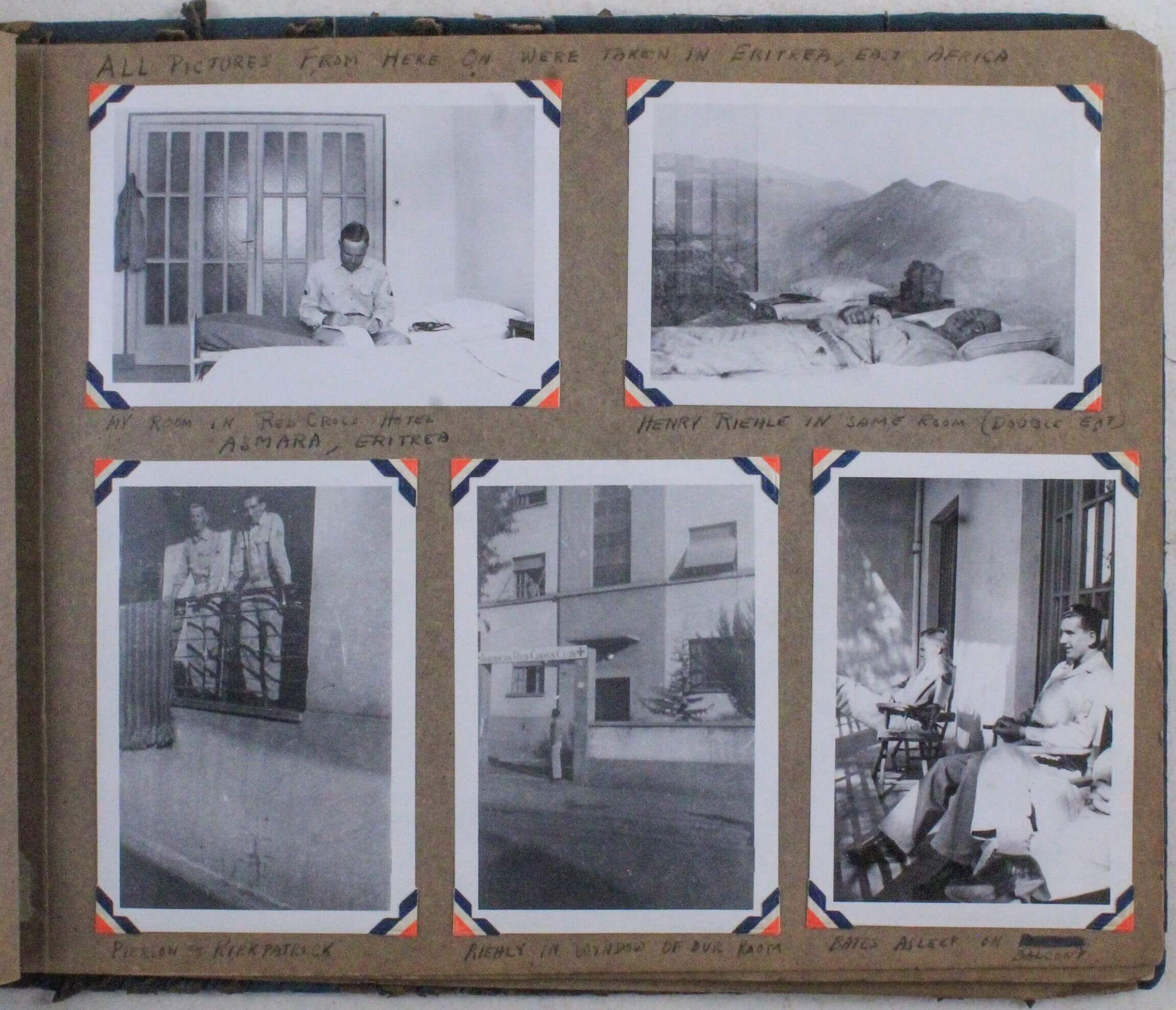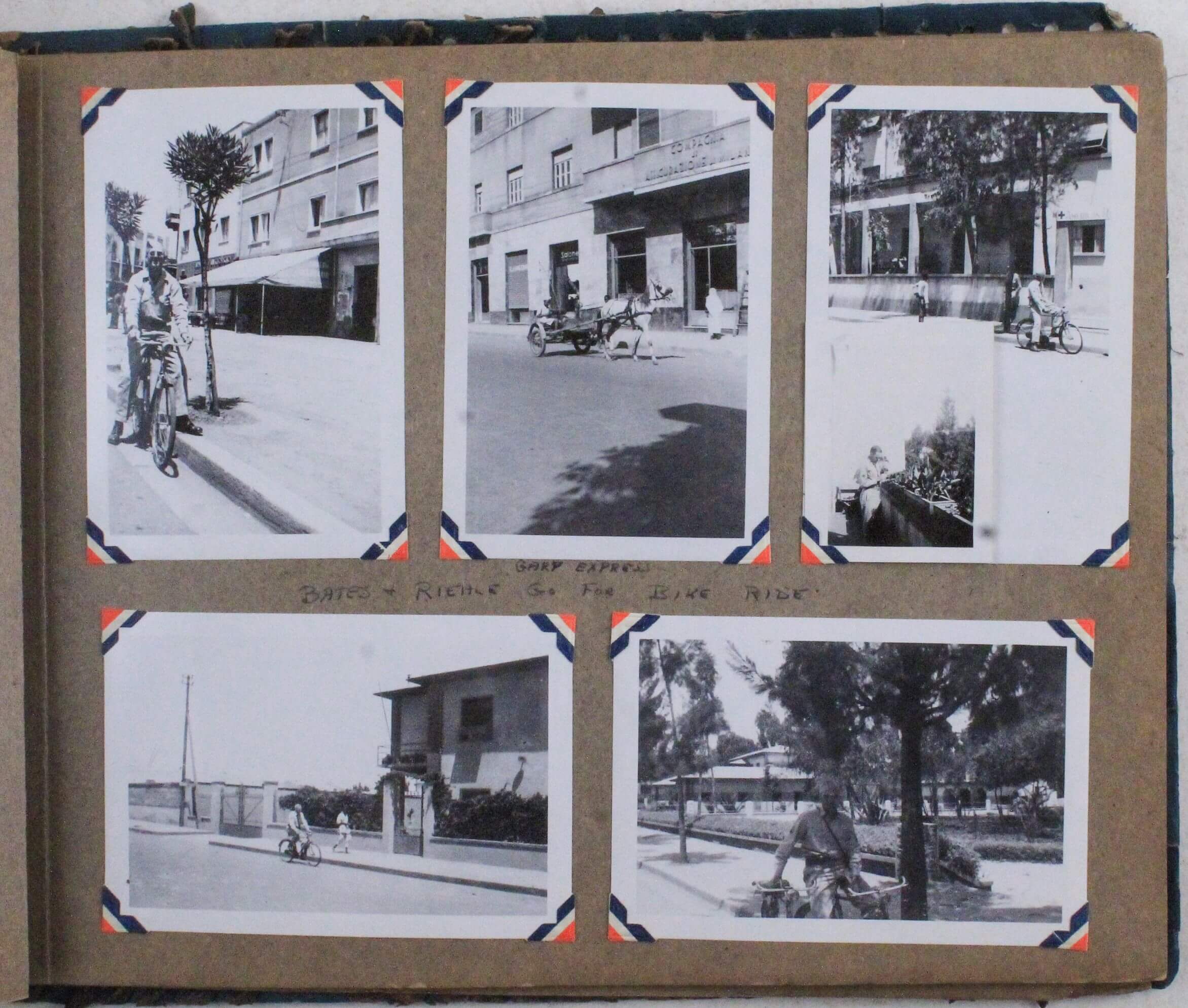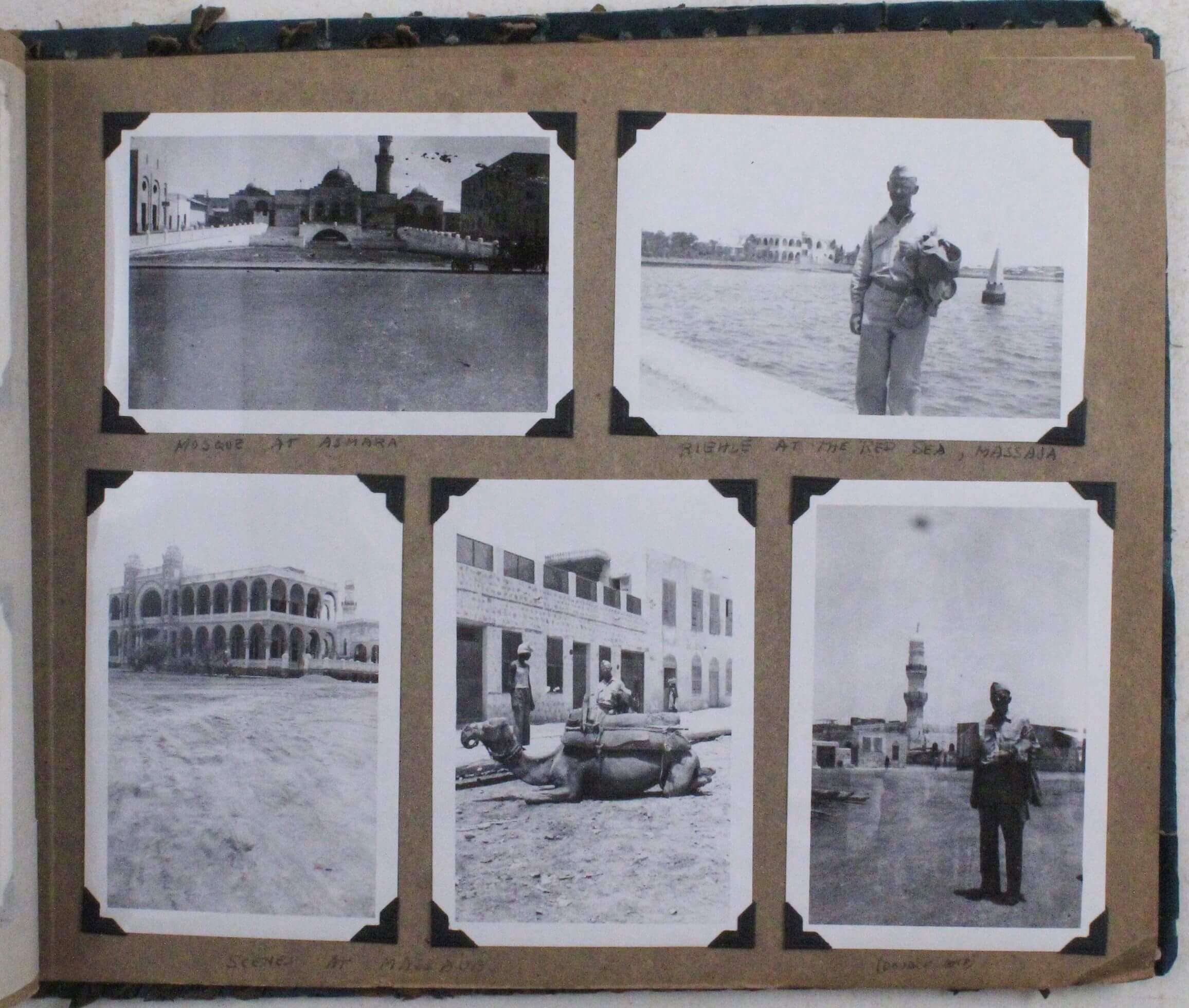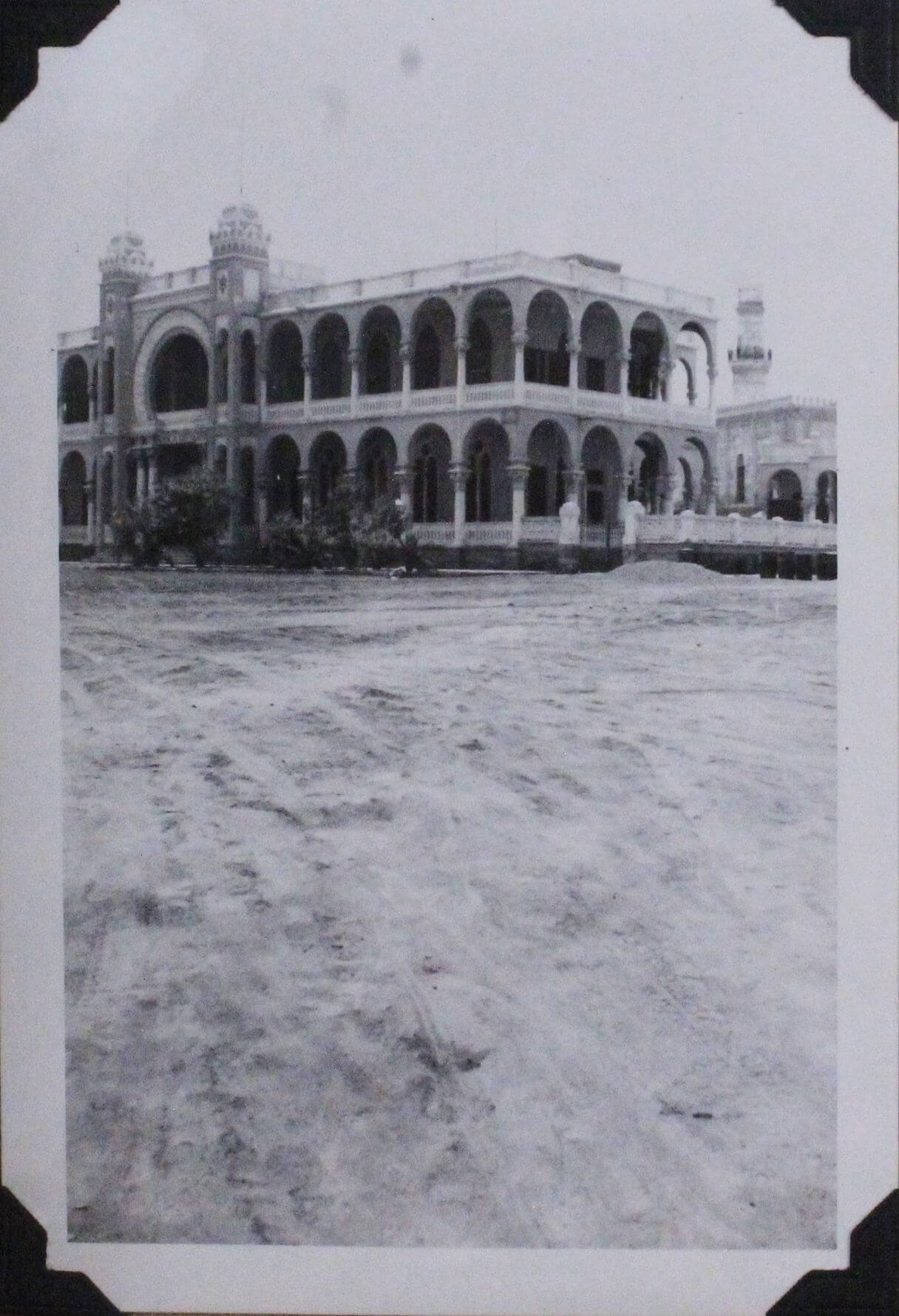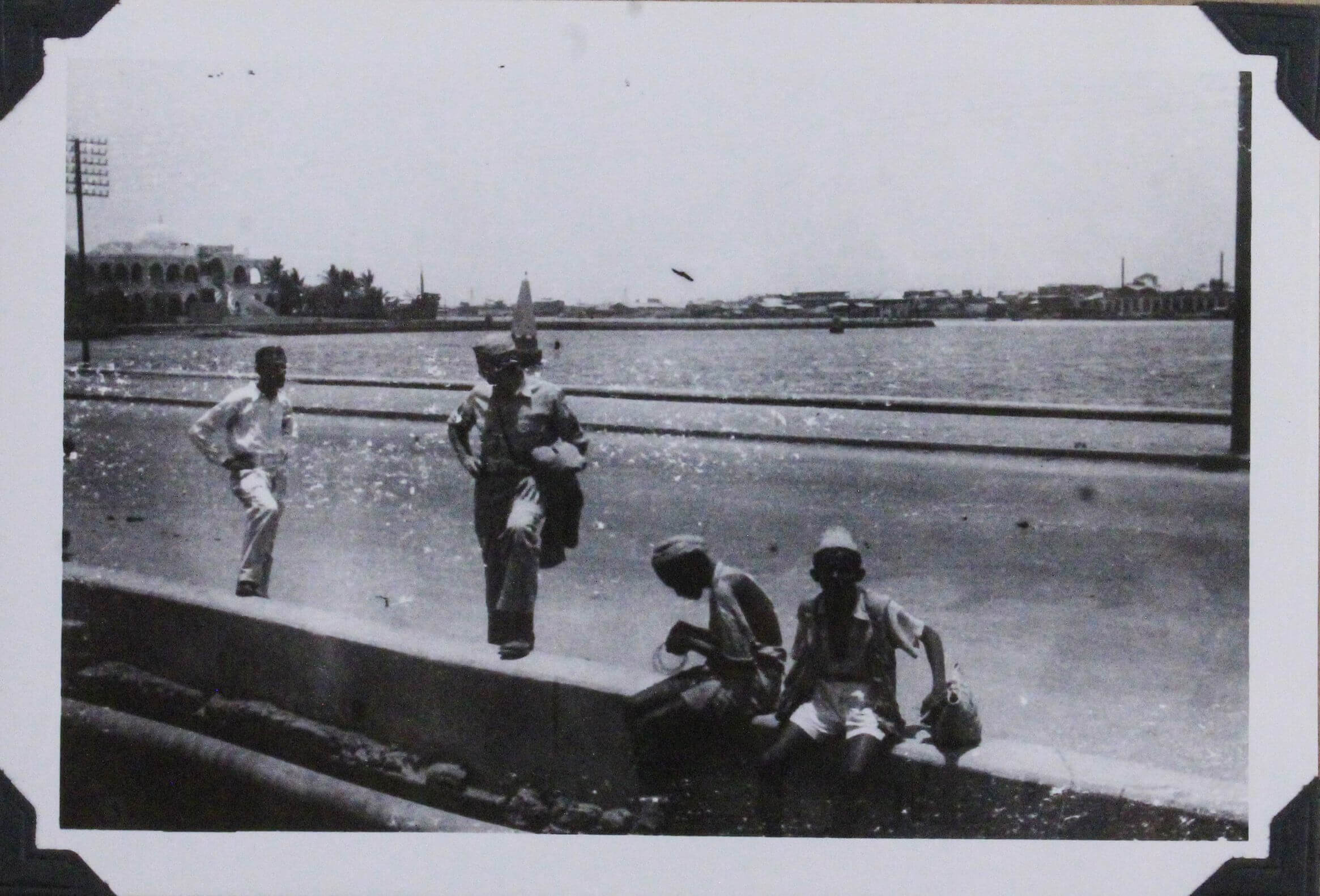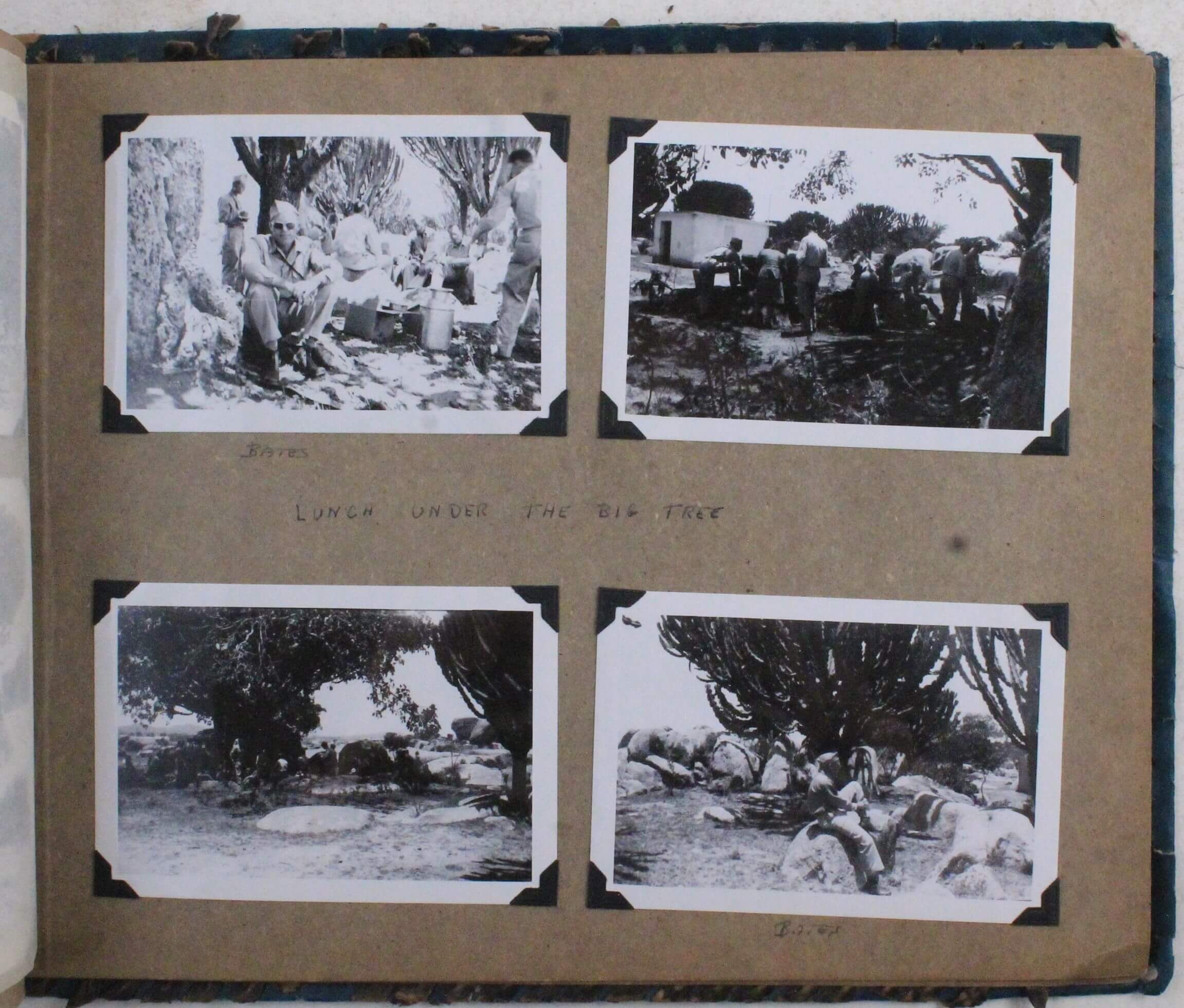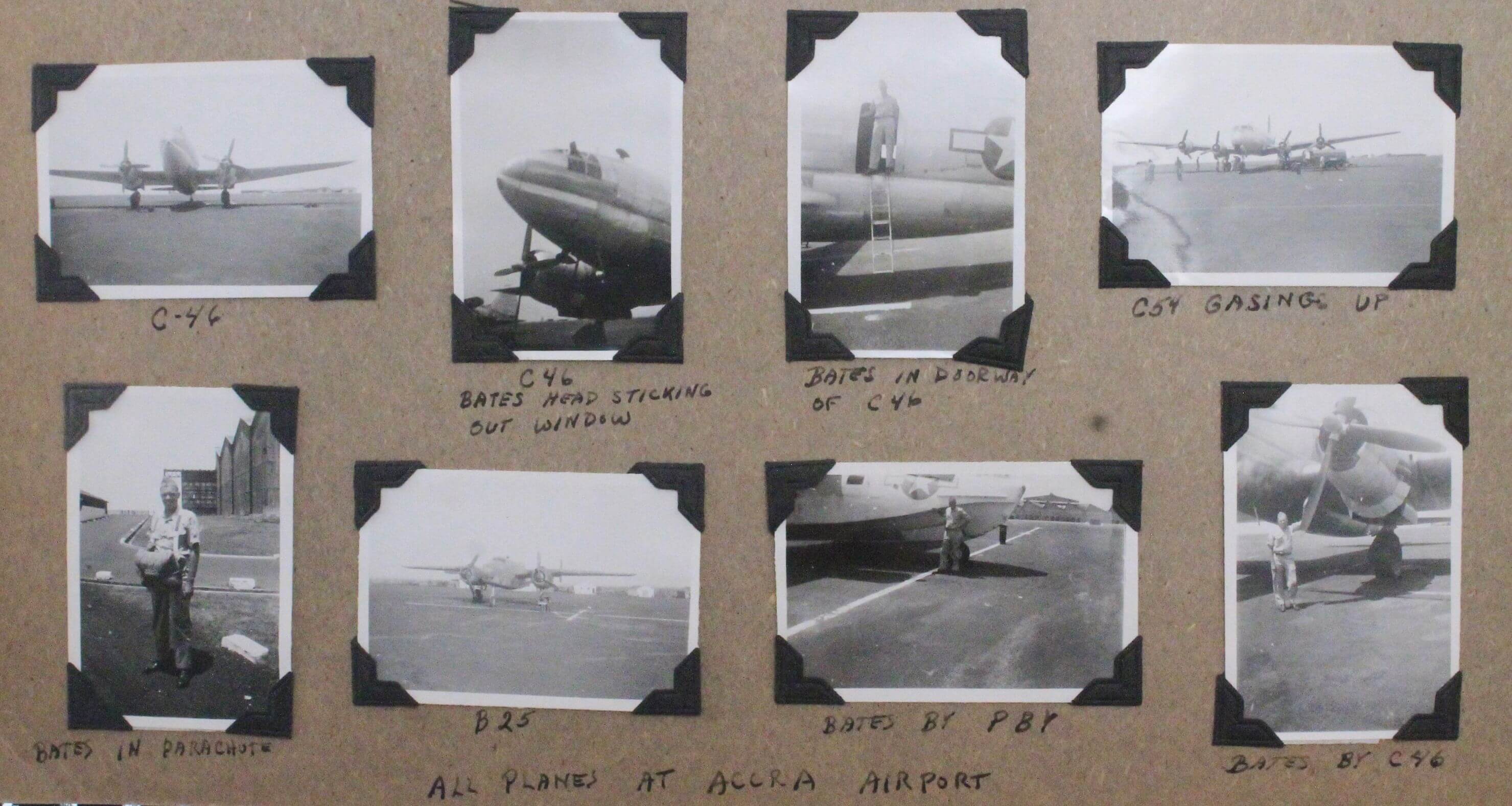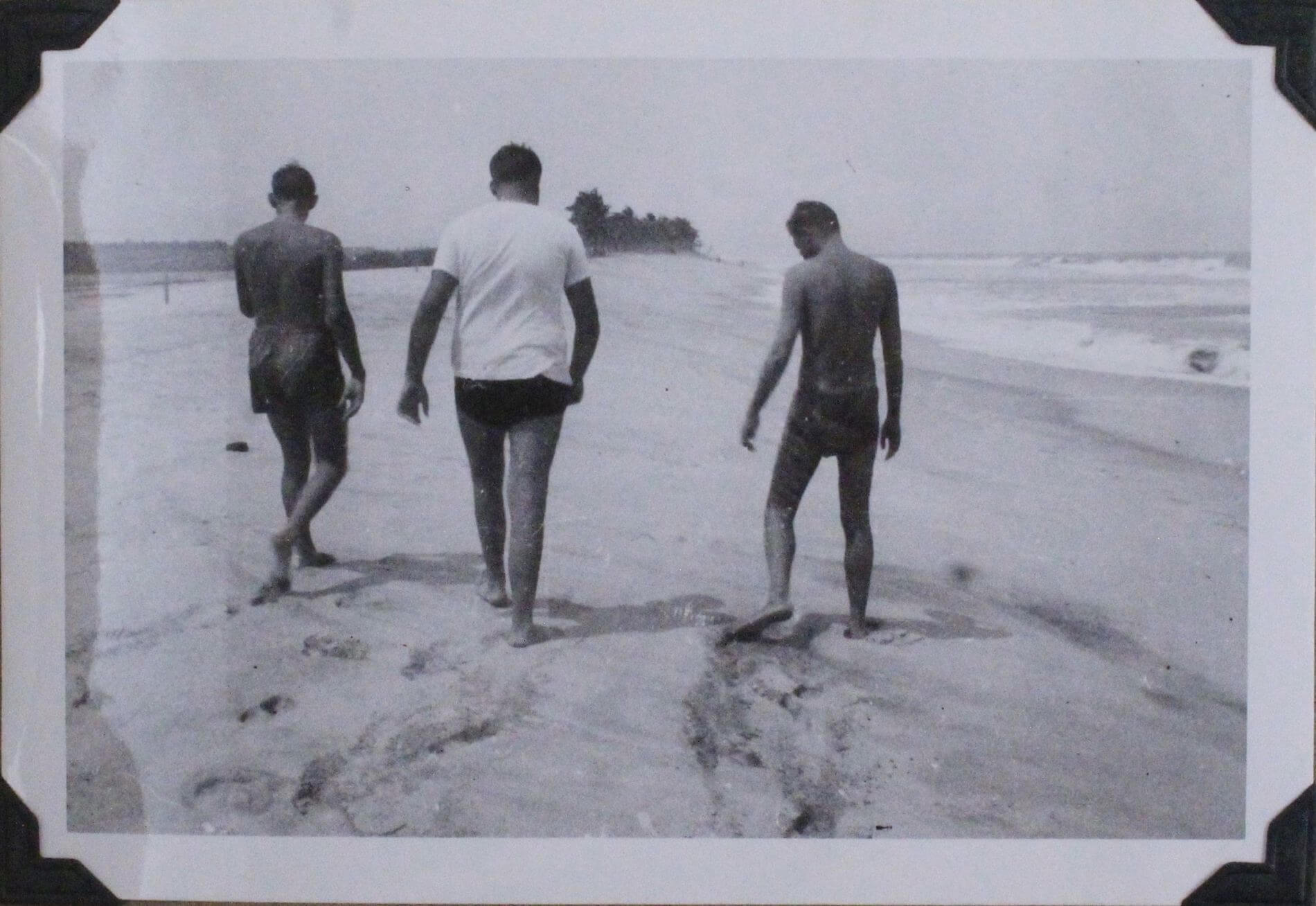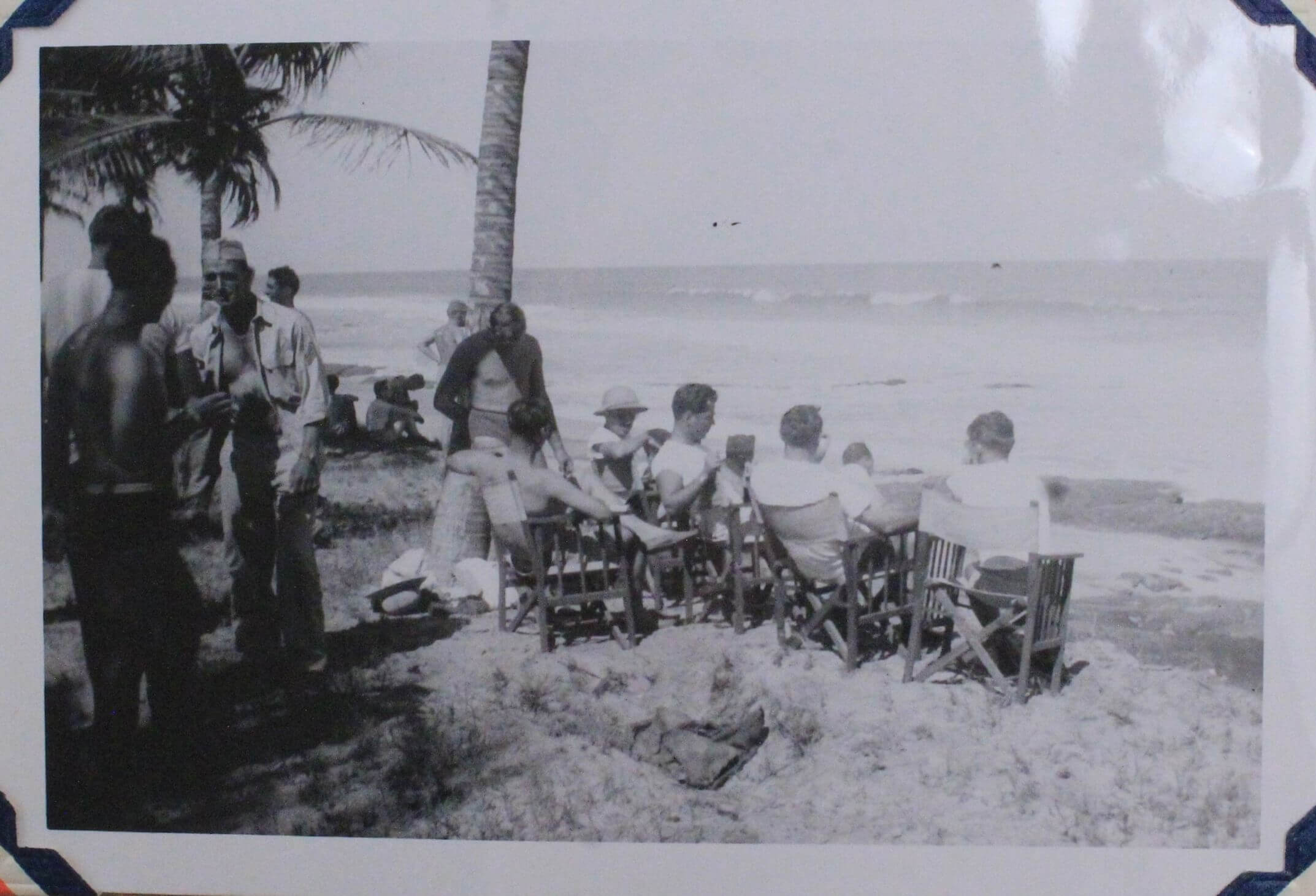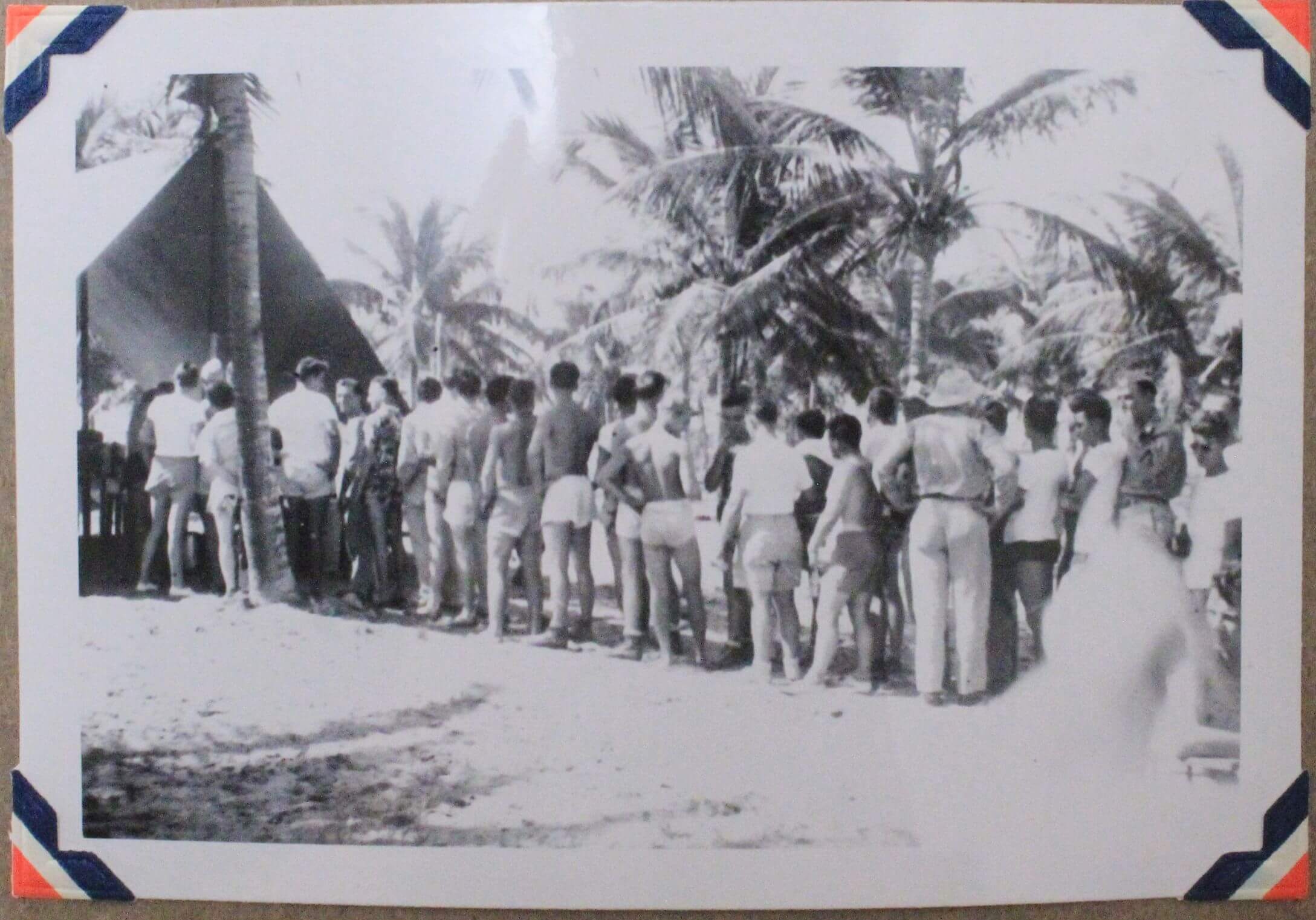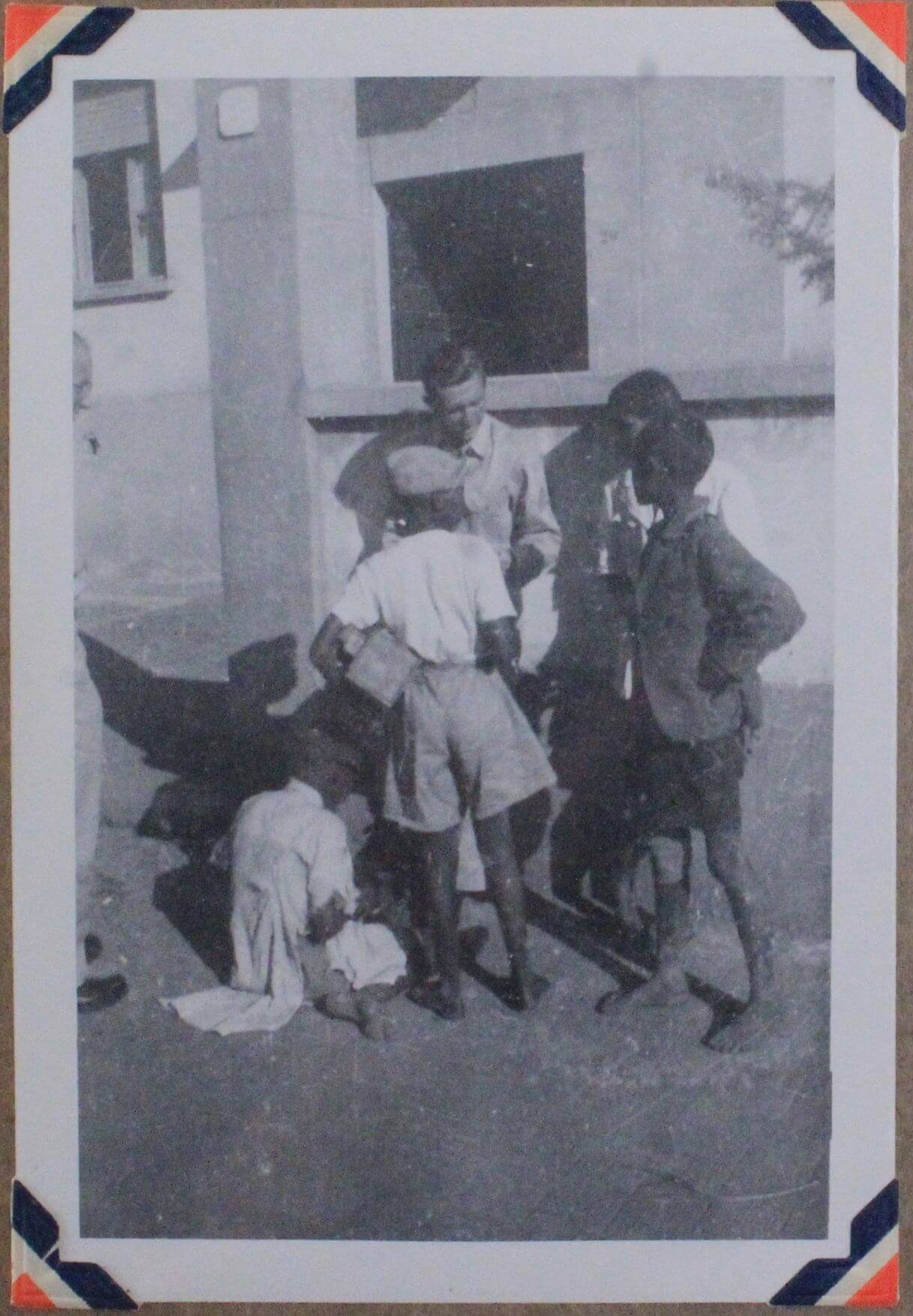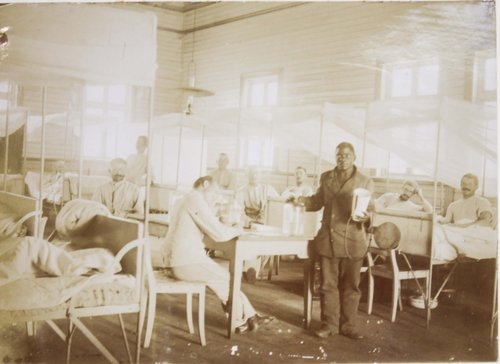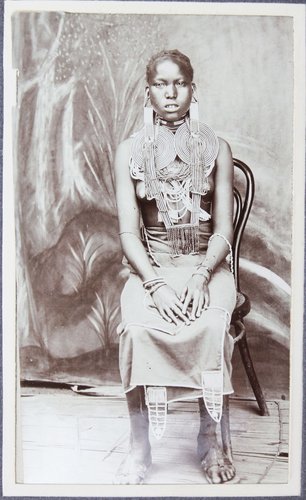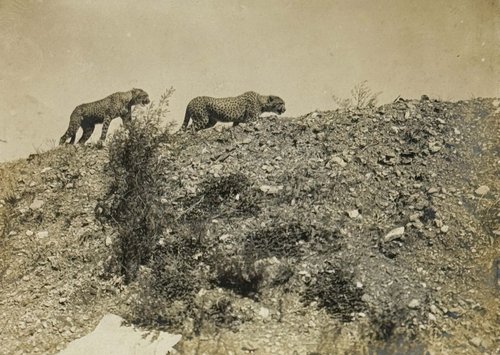

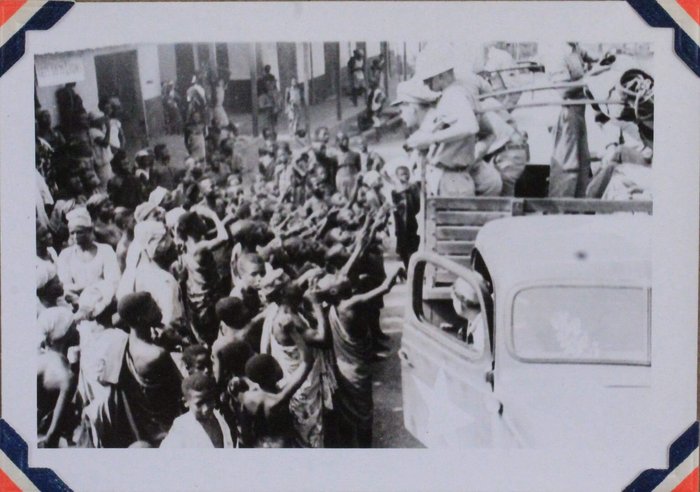

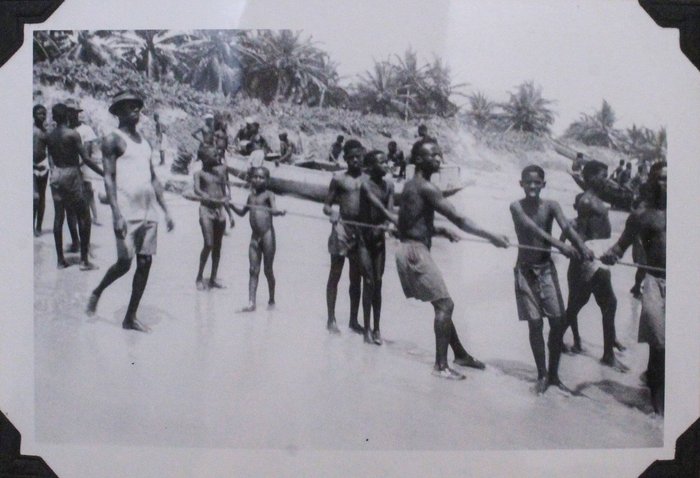





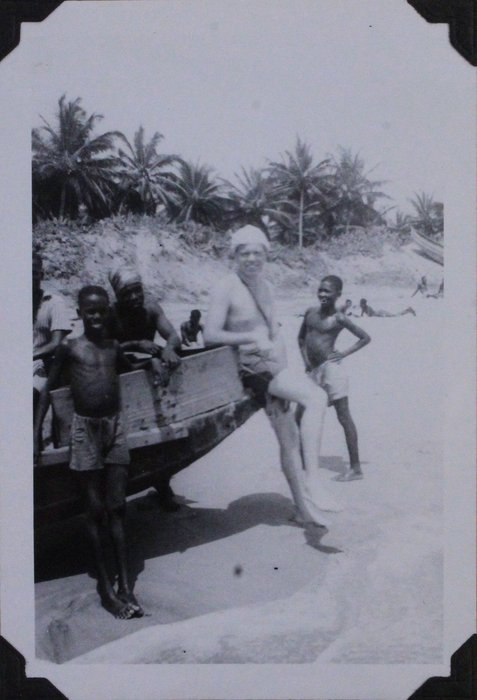




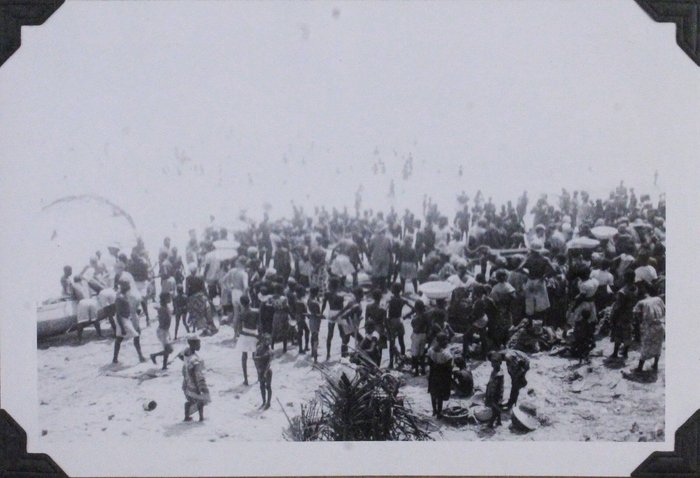




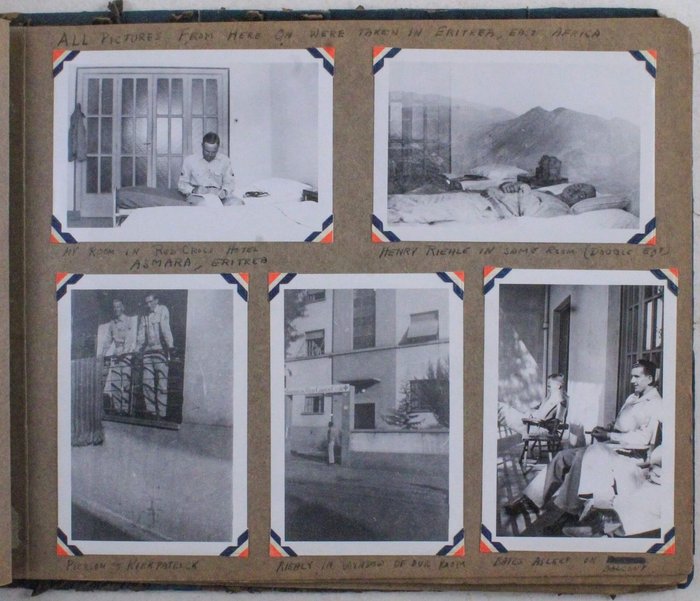

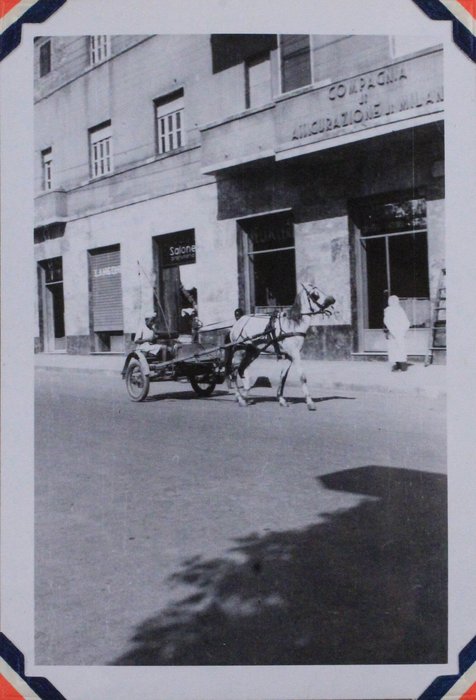





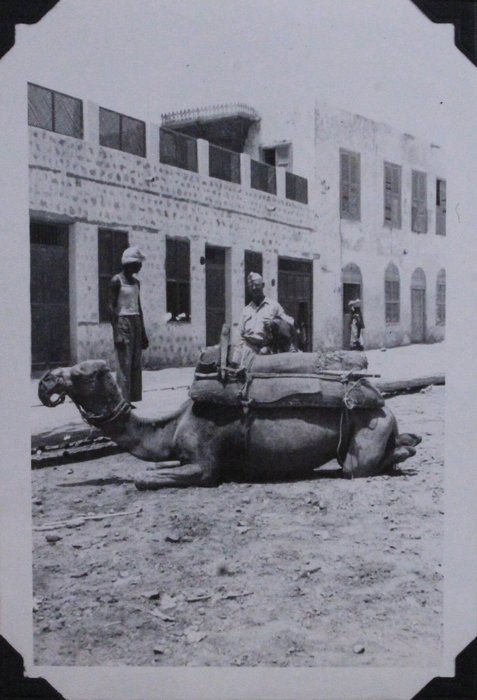

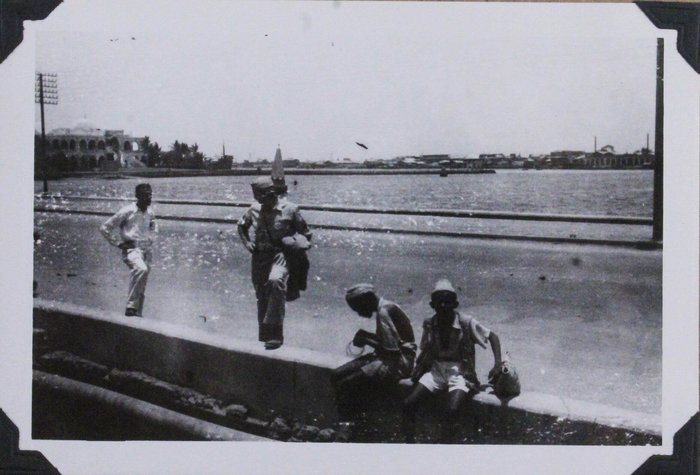


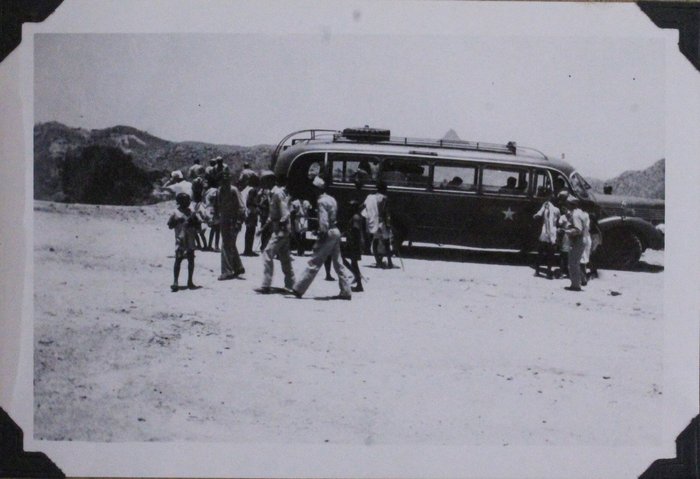

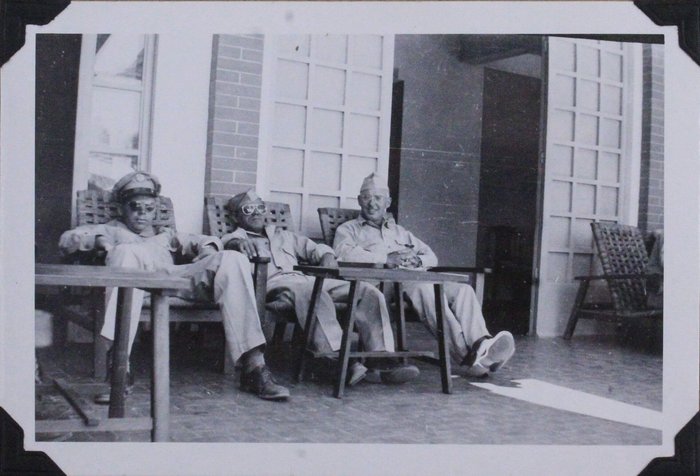
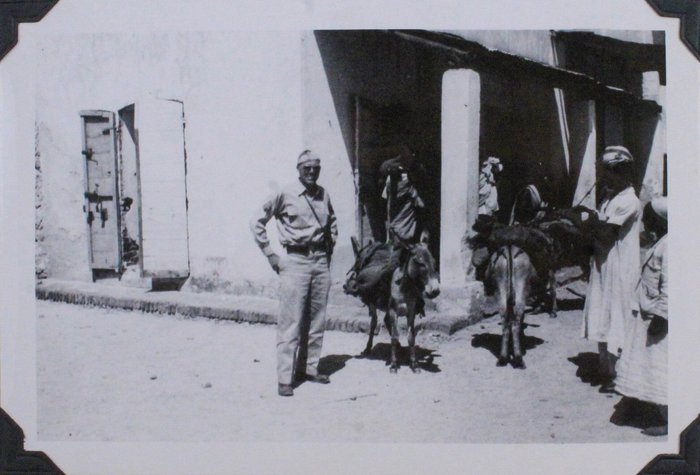


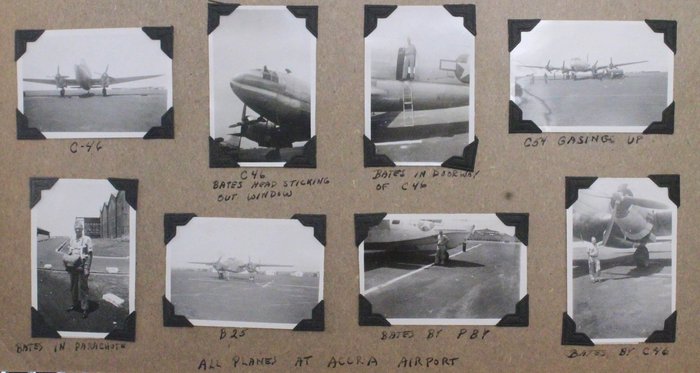
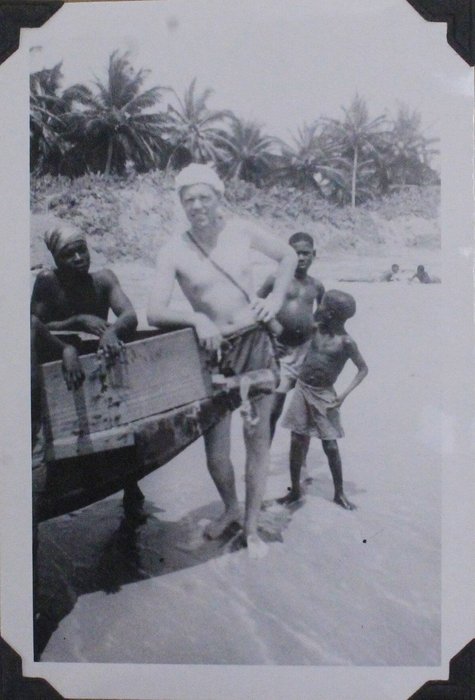

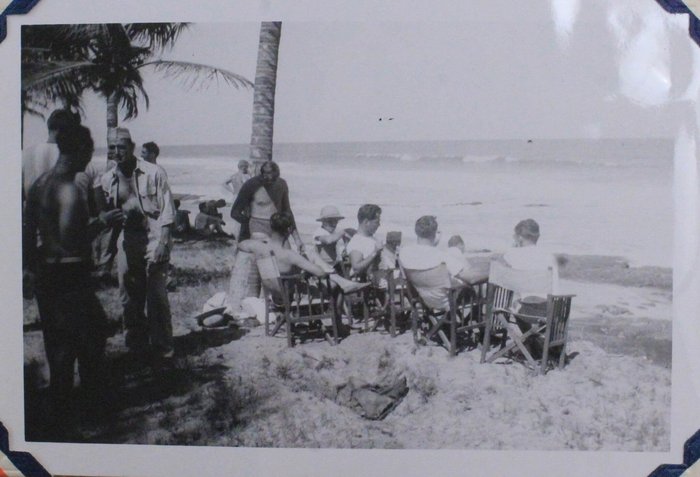
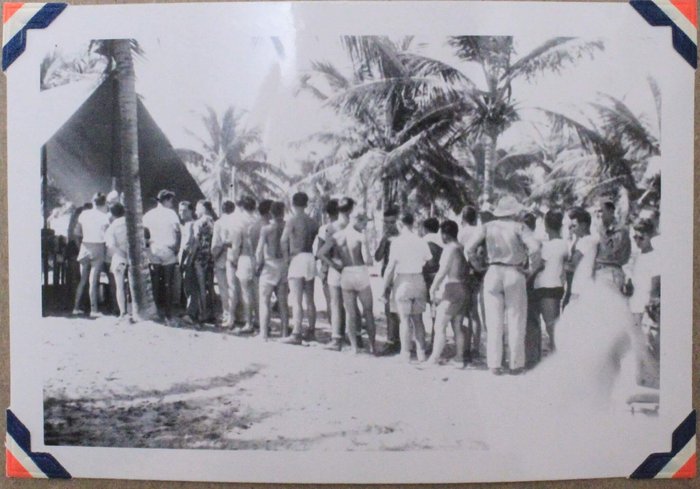



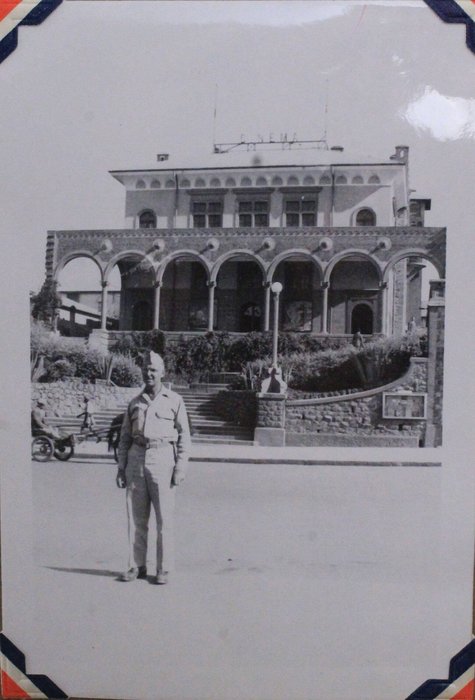
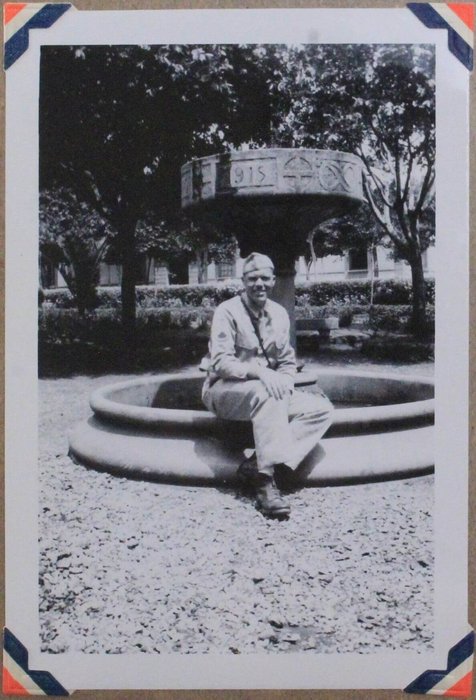

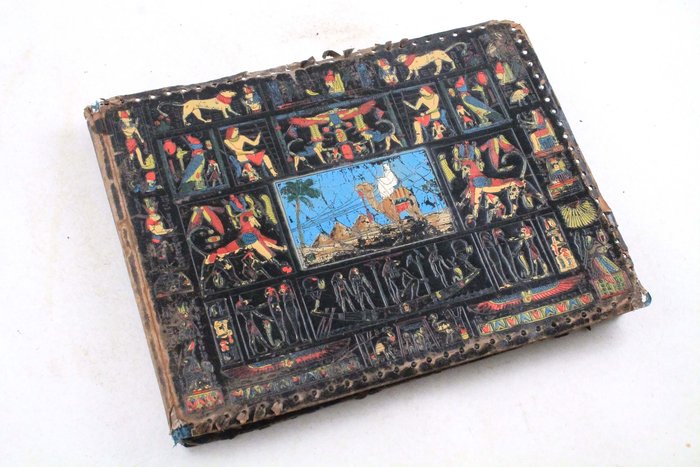
#PC36
Ca. 1940s
Oblong Folio album (ca. 27,5x34,5 cm). 20 card stock leaves, all but one with tissue guards. With 195 mounted and one loosely inserted gelatin silver photographs, from ca. 8,5x13 cm (3 ½ x 5 in) to ca. 6x5 cm (2 ½ x 2 in). Most photos with period black ink manuscript captions on the mounts and verso. First leaf with a period manuscript title: “Accra 1943-1945.” Pictorial color embossed cover with Egyptian hieroglyphs and acenter-image of pyramids. Covers with mild wear, two tissue guards detached, a few photos with minor silvering, but overall a very good album with interesting strong photos.
[With:] Eritrea. Handbook on Eritrea for Use of Visitors & Tourists. Published by British Ministry of Information. Eritrea: British Information Services, [Asmara?], [1944]. Ca. 24x16,5 cm (9 ½ x 6 ½ in). 36 pp.: ill., map. Original publisher’s illustrated wrappers. Minor tears of the extremities, but overall a very good copy.
Historically significant extensive collection of lively vernacular photographs taken by a U.S. Air Force serviceman during his time in the Accra and Eritrea Service Commands from 1943 to 1945.
The Air Transport Command (ATC), formed after the 1941 Pearl Harbor attack, supported U.S. involvement in the Pacific & European theaters by efficiently coordinating the global movement of vital resources. The Accra and Eritrea Service Commands played pivotal roles in African logistics, with Accra serving as ATC's Central Africa hub and the Eritrea Service Command overseeing logistics from Sudan to the Persian Gulf.
The album features 102 photographs of Ghana. Eighty-seven vibrant, lively urban views depict Accra and show crowds dividing up freshly caught fish, native women shopping in their traditional attire, etc. Several candid portraits show cheerful soldiers in swimwear, sharing laughter with the locals on the beach, proudly displaying their fish catch, and striking poses with native children & a truck driver. There are also individual and group photos of servicemen (all captioned, with names indicated) playing volleyball, performing stunts on the beach, enjoying barbeques, lining up for chow, and "relaxing after" it. The remaining scenes show the military barracks & a camp, control tower, "all planes at Accra airport," mess hall with "wogs washing trays," and "theatre at 8th air depot" (American aircraft repairing company formed in Accra during WWII).
Other Ghanaian photos include fifteen views of Aburi, showing a horticulture school in the Aburi Botanical Garden and soldiers posing with giant rubber & cocoa trees.
The album also includes ninety-four photographs taken during the compiler’s stay at the Service Command in Eritrea. Over forty-five scenes show Asmara and depict soldiers posing in front of the Church of Our Lady of Rosary (built in the early 1920s) and the Asmara cinema (built in 1918), "getting shoes shined" by local children, "shooting the bull after chow," feeding deer, horse riding, and cycling in streets (Italian signboards are clearly visible in the background). There are also several views of the exterior & interior of the Red Cross Hotel, where the soldiers likely stayed during their service.
About ten photos document a trip to the port city of Massawa, showcasing the Banca d'Italia building (built in the 1920s and ruined during the liberation war), native kids fishing, a beer garden by a swimming pool, and a "Red Cross cow girl." The other photos mostly capture Cheren and portray a bustling local market, soldiers posing with burst shells at the Cheren battlefield (the site of a battle between the British and Italian forces in 1941) & "taking it easy" at the Grand Hotel. Overall, a historically interesting extensive collection of lively vernacular photographs taken by a U.S. Air Force serviceman during his time in Ghana and Eritrea.




